By Joan Price
Visit a gym on any given day, and you’ll find men and women working their abs with intensity and commitment. The problem is, they’re often doing it wrong. Real wrong. Waste-of-time wrong. So we consulted with a bevy of exercise experts, who offered their knowledge to help us debunk the following six myths of abdominal training.
The key is to choose exercises that fatigue your ab muscles, so that they actually need recovery time. Include some exercises that use the abs functionally — in other words, the way they’re used in real life. For example, abdominals are used to stabilize the body. Feel this function by holding a push-up position without letting your belly sag. Don’t do the push-up — just keep holding the position and feel your abs going crazy trying to isometrically contract enough to stabilize your body. If that’s easy, put your feet up on a weight bench or, even better, a stability ball. Now you’ll really feel your abs!
Another tough ab variation is “pizza feet,” a reverse crunch that Lockridge recommends: Lie on the floor with your legs up in the air (straight or slightly bent) and the soles of your feet aimed at the ceiling. Imagine that you’re balancing a pizza box on your feet. Lift the box straight up until your hips are off the floor.
Don’t swing the feet, or you’ll lose the pizza. Keep your hands by your hips, helping slightly by pushing, if necessary. If you’re strong enough, keep your arms off of the floor.
Think of it: If you chew gum, you don’t get skinny cheeks. You can do crunches with the best possible form, but it won’t whittle your waistline or belly by itself. You may develop abs of steel, but they’ll still be covered by body fat if you don’t watch your diet and do cardiovascular activity to reduce the fat layer.
“Doing ab exercises to reduce the waistline is a fool’s errand. Reducing the waistline has to do with reducing body fat,” explains Bryant Stamford, PhD, director of the Health Promotion and Wellness Center, professor of exercise physiology at the University of Louisville in Kentucky and an editorial board member of The Physician and Sportsmedicine.
Burning abdominal fat is the same as burning fat anywhere on your body: You have to do aerobic exercise and, of course, not eat so many calories that you put the fat back on again. “Your diet and large-muscle activity will accomplish much more than 1,000 sit-ups a day,” Stamford says.
That six-pack muscle is the rectus abdominis, today’s glamour bodypart. Although it’s the most prominent muscle, the most important reason to train your abdominal muscles is for back health, and just working the rectus abdominis won’t protect your back as well as doing a variety of exercises that also strengthen the external obliques, internal obliques and the transverse abdominals. So variety is the key.
Besides being risky, they’re ineffective. You may think that you’re working your obliques, but the force of gravity brings the weight toward the floor rather than countering the direction that the muscle fibers are contracting. So this exercise is useless as well as dangerous.
Instead, Lockridge suggests this super-hard exercise for developing your obliques:
1. Kneel beside (not facing) a stability ball, and drape one arm over the ball with your armpit resting on it.
2. Put your feet flat on the floor in a wide stance. Your body will now be draped even farther over the ball.
3. Put your hands behind your head in the international signal for “I’m doing abdominals now.”
4. Do a lateral lift, like a windshield washer action, pivoting up on your hips, not twisting. (As you get more advanced, bring your feet closer together.)
5. Repeat the exercise for the obliques located on the other side of your body.
Chiseled, rock-hard, washboard, killer abs! Contrast these terms of affection and awe with what we may see in the mirror: pot belly, paunch, sag, gut. Athletes are midsection maniacs, obsessed with the dream of the perfect abs that we all know we can have — if we could just do enough sit-ups.
Visit a gym on any given day, and you’ll find men and women working their abs with intensity and commitment. The problem is, they’re often doing it wrong. Real wrong. Waste-of-time wrong. So we consulted with a bevy of exercise experts, who offered their knowledge to help us debunk the following six myths of abdominal training.
myth 1. Abdominal muscle is different from regular muscle
Muscle is muscle. Period. Ab muscle is just like the muscle in your quads, biceps and lats. “The abdominals are different only in location,” explains Alice Lockridge, MS, an exercise physiologist based in Renton, Wash. “They are not resting on a bony surface, like the biceps or quads. Instead, they span the stomach and intestines like a bridge over a cavern. Look at any anatomy book. But that doesn’t change basic physiology or the laws of science.” There’s no structural difference, no physiological difference and no difference in how the ab muscle contracts and gets stronger.
myth 2. You have to train abs at least every other day
Train them at most every other day so you leave time for recovery, just as with any other muscle group, says Ken Alan, BS, a Los Angeles-based instructor of personal trainers and spokesman for the American Council on Exercise. “Your abs can get strong and stay strong when you work them twice a week,” he suggests, but you have to train them hard enough.
The key is to choose exercises that fatigue your ab muscles, so that they actually need recovery time. Include some exercises that use the abs functionally — in other words, the way they’re used in real life. For example, abdominals are used to stabilize the body. Feel this function by holding a push-up position without letting your belly sag. Don’t do the push-up — just keep holding the position and feel your abs going crazy trying to isometrically contract enough to stabilize your body. If that’s easy, put your feet up on a weight bench or, even better, a stability ball. Now you’ll really feel your abs!
Another tough ab variation is “pizza feet,” a reverse crunch that Lockridge recommends: Lie on the floor with your legs up in the air (straight or slightly bent) and the soles of your feet aimed at the ceiling. Imagine that you’re balancing a pizza box on your feet. Lift the box straight up until your hips are off the floor.
Don’t swing the feet, or you’ll lose the pizza. Keep your hands by your hips, helping slightly by pushing, if necessary. If you’re strong enough, keep your arms off of the floor.
myth 3. Ab exercises melt away abdominal fat
Spot reducing has been disproved over and over again, but some athletes still believe that it works. “You can’t get rid of the fat over a muscle by repeatedly exercising that bodypart,” says Douglas Brooks, MS, an exercise physiologist based in northern California. “Study after study has refuted that. Any physiology textbook will tell you that. Spot reducing is a dead dog.”
Think of it: If you chew gum, you don’t get skinny cheeks. You can do crunches with the best possible form, but it won’t whittle your waistline or belly by itself. You may develop abs of steel, but they’ll still be covered by body fat if you don’t watch your diet and do cardiovascular activity to reduce the fat layer.
“Doing ab exercises to reduce the waistline is a fool’s errand. Reducing the waistline has to do with reducing body fat,” explains Bryant Stamford, PhD, director of the Health Promotion and Wellness Center, professor of exercise physiology at the University of Louisville in Kentucky and an editorial board member of The Physician and Sportsmedicine.
Burning abdominal fat is the same as burning fat anywhere on your body: You have to do aerobic exercise and, of course, not eat so many calories that you put the fat back on again. “Your diet and large-muscle activity will accomplish much more than 1,000 sit-ups a day,” Stamford says.
The Perfect Crunch
Here’s how to do your basic crunch, with help from Bryant Stamford, PhD. Pay careful attention to your technique to get the most benefit from this abdominal workhorse.1. Lie on your back with your knees bent. Your hands can be crossed on your chest, relaxed beside your head, relaxed at your side or crossed behind your head. Do not interlace your fingers behind your head — this makes it too easy to pull on your head.
2. Contract your abs as you exhale. Focus on the contraction: Imagine that you are pulling your rib cage toward your hipbone. 3. Let the contraction pull your shoulders, chest and shoulder blades slowly up off the floor. Do not use momentum to lift your body, and never put your hands behind your head. 4. Pause when your upper body is about halfway to an upright position. (Your shoulders should be six to 12 inches off the floor.) Hold the contraction for a moment. 5.Slowly lower your body to the floor, resisting gravity’s pull while you inhale. 6. Don’t relax when your head touches the floor. Maintain the tension in your abs and begin the next contraction. Continue until you are fatigued. If you can do 20 of these crunches slowly and with good form, make them harder by adding resistance. Hold a weight plate or dumbbell on your chest or behind your head, or keep a couple of light dumbbells by your ears. The farther away the weight is from your abs, the harder the crunch will be. You could also do your crunches on a decline slant board or over a beach ball, so that your shoulders are lower than your hips. And don’t cheat by anchoring your feet. If your feet rise off of the floor or board, you are getting too aggressive with your weight load. Ease up for now until your abs have a chance to grow stronger. |
myth 4. High repetitions are required to make gains
Let’s say you want to work your biceps. Would you do 100 concentration curls with a 2.5-lb weight or 10 with a 25-lb weight? The key to abdominal gains is the same: overload. The reason we think that we have to do so many reps is because we’re not working them hard enough. “If you find that you have to do 50 to 100 crunches before fatiguing, slow down and work on perfecting your technique,” says Candice Copeland Brooks, a fitness expert who, with her husband, Douglas Brooks, gives abdominal-technique workshops to fitness instructors. Here are some of her tips:
- Pull your shoulder blades together during crunches so you can’t cheat by pulling your head forward or rounding your upper back.
- Make your abdominals contract before anything moves. First the rib cage moves, then the rest follows.
- Slow down. If you go too fast, you use momentum to perform the movement — not your muscle.
myth 5. All you need to do is lots of sit-ups
Forget full sit-ups. They may be hard, but they primarily strengthen muscles that are already strong, and these are not even abdominal muscles. “If you come all the way up, you work your hip flexors, which have nothing to do with your six-pack at all,” Alan says. “It’s better to do a variety of exercises to attack the six-pack muscle from different angles and to engage other abdominal muscles.”
That six-pack muscle is the rectus abdominis, today’s glamour bodypart. Although it’s the most prominent muscle, the most important reason to train your abdominal muscles is for back health, and just working the rectus abdominis won’t protect your back as well as doing a variety of exercises that also strengthen the external obliques, internal obliques and the transverse abdominals. So variety is the key.
myth 6. Barbell twists are great to trim your abs
Barbell twists are a great way to help your chiropractor send his kid through college at your expense. “You have to rate barbell twists up at the top of the stupid things that people do when they’re in the gym,” Stamford says. “You’re creating momentum with weight on your back. There’s extraordinary stress placed on the lower back area. That’s potentially very damaging to the lower back.”
Besides being risky, they’re ineffective. You may think that you’re working your obliques, but the force of gravity brings the weight toward the floor rather than countering the direction that the muscle fibers are contracting. So this exercise is useless as well as dangerous.
Instead, Lockridge suggests this super-hard exercise for developing your obliques:
1. Kneel beside (not facing) a stability ball, and drape one arm over the ball with your armpit resting on it.
2. Put your feet flat on the floor in a wide stance. Your body will now be draped even farther over the ball.
3. Put your hands behind your head in the international signal for “I’m doing abdominals now.”
4. Do a lateral lift, like a windshield washer action, pivoting up on your hips, not twisting. (As you get more advanced, bring your feet closer together.)
5. Repeat the exercise for the obliques located on the other side of your body.
Don’t Waste Time
You have probably seen people who spend a half-hour or more working on their abs every day. You have to give them credit for perseverance, but they’ll never make it to the top of the class on ab development. Don’t waste time by falling victim to the six main ab myths. Train intelligently in accordance with scientifically based training techniques. In the long run, you’ll make greater gains, and your ripped six-pack will be the envy of those around you.
Having said that, exercises that make your abs stronger will increase their size and definition. So when you melt away the fat covering your abs they will look even more spectacular. Also, ab training can improve posture, stabilize the back so that back pain is prevented and of course having bigger ab muscles means more calories are being burned.
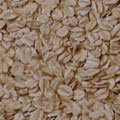 1 cup (cooked):
1 cup (cooked):
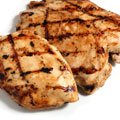 In 1 breast (3 oz):
In 1 breast (3 oz):
 In 3 egg whites:
In 3 egg whites:
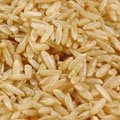 In 1/2 cup:
In 1/2 cup:
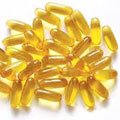 In 1 tablespoon:
In 1 tablespoon:
 In 4 spears (cooked):
In 4 spears (cooked):
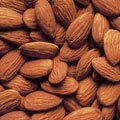 In 4 spears (cooked):
In 4 spears (cooked):
 In 1 clove:
In 1 clove:
 In 1 tomato:
In 1 tomato:
 In 1 apple:
In 1 apple:

